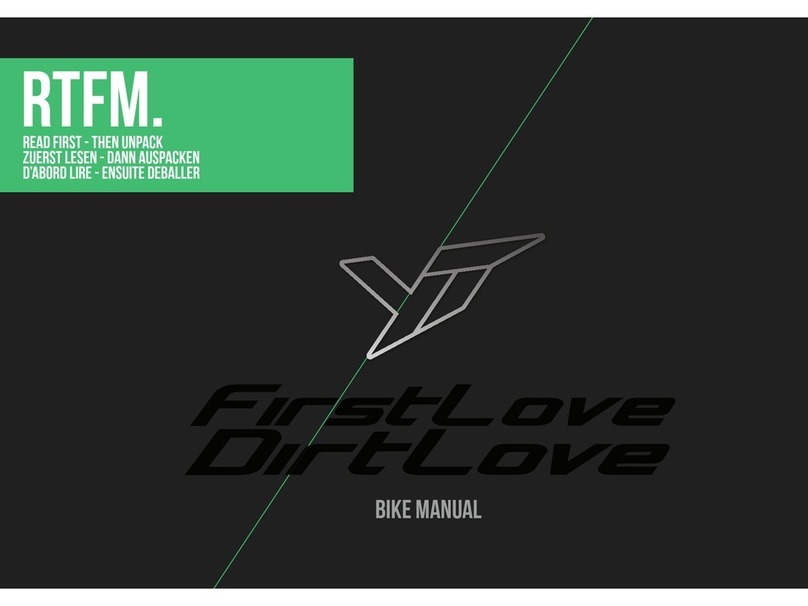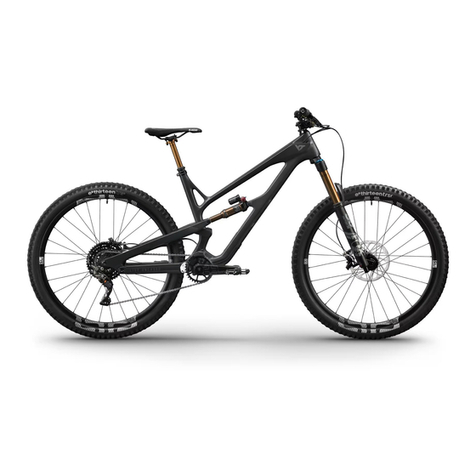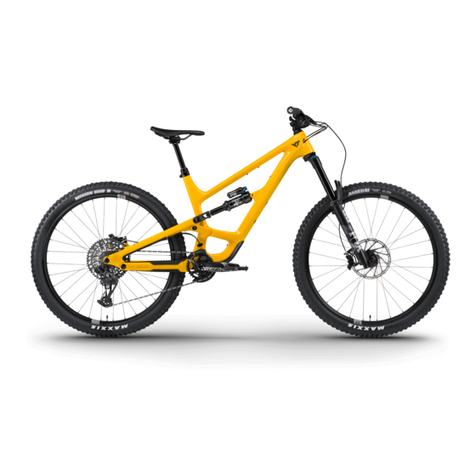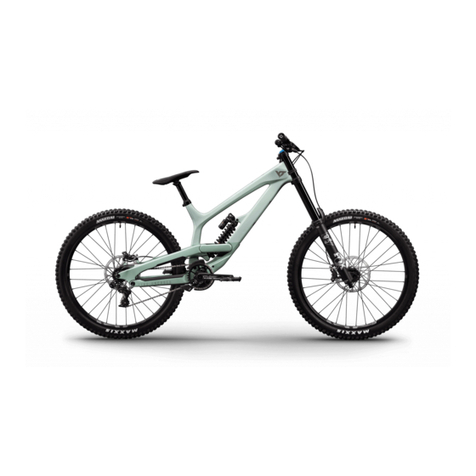
yt 0504 yt
EN
And now you’re ready to ride! Well, almost. First you have to
uncrate this machine, of course. Do it properly and you’ll be
able to use the YT BikeBox again, for transporting your YT or
to send it in for a service. And setting it up? With this manual
easier than you might think.
You’ve guessed it, a manual is just so much more than drifting
on your rear wheel. This one is a step-by-step guide for setting
up and maintaining your ride. For both involve technical knowl-
edge,aswellascraftsmanship.That’swhywe’lltalkyouthrough
all basic settings and maintenance recommendations for your
YT: Follow the instructions and everything will run smoothly.
Needless to say, that this manual is not meant to provide the
knowledge or skills required for professional bike assembly
and it won’t enable you to start building a bike from single
pieces or repairing crucial equipment. But you don’t have to
be MacGyver either.
Together we’ll get the job done!
You don’t feel ready to carry out set-up, maintenance and
repair yourself? No need to break out in cold sweat. Play it safe
and hand the job over to a specialist workshop. Or get in touch
with us: We’ll take care of you. Our service will stand by your
side, answering your questions.
There’s only one thing left to say: This will happen within the
scope of our warranty and liability limitatons and exclusions.
When dealing with inquiries by phone or mail, important details
may be overlooked or get lost in translation. We can never be
100 % sure, that the type and scope of the required work have
been described correctly and to their full extend. Furthermore
there’s always a degree of uncertainty in remote diagnostics
and of course we cannot control whether you have followed
our instructions appropriately. So we hope it’s obvious and
reasonable that we can’t compensate and accept liability for
damages and accidents that are results of self-executed re-
pairs or non-professional maintenance. In either of these cases
warranty of components shall be void. Fair enough, isn’t it?
Get in touch with us! service@yt-industries.com
PUT YOUR TRUST IN YT: CHECK.
ORDERED YOUR BIKE: CHECK.
GOOD TIMES: CHECK.
TIP: Don’t ditch the YT BikeBox, keep it, incl. all additional material.
so you can safely repack your bike for transport again.
Good Job.
congrats & thanks for that!




































